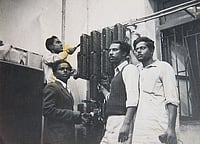Professor Ratnakar Shetty, the former CAO (Chief Administrative Officer) of the BCCI, feels the Supreme Court ruling was akin to a few tweaks to existing rules, and not anything radical. (More Cricket News)
BCCI Tenures Not Much Different Than Sports Code, Feels Former BCCI CAO Prof. Ratnakar Shetty??
Even if a cricket administrator were to get lucky and patch together a 12-year tenure across state and board, it would be the same duration as provided in the National Sports Code.

“Earlier a state unit term, clubbed with a Board term, was counted as continuous, now it is not so. That’s about the only advantage one [an officebearer] would have [in the new scheme of things]. Beyond that, I don’t think the Supreme Court order makes that much of a difference or affects too many people,” Shetty told?Outlook.?
The Court order, he felt, was of a “clarifying nature” more than anything else.?
“It clarifies on the cooling off period,” he said. “If you look at the BCCI’s history, people have gone on to become office-bearers in the BCCI after they have completed their term in the state association. Even after this order, a person can be an office-bearer for only six years at a stretch, and then he has to take a cooling off period.”?
When told that the order does give a potentially unbroken 12-year-run to office-bearers (six years in state, six in BCCI), Shetty said this was no different from other sports.?
“If you look at the sports code, a president of a National sports federation can hold office for 12 consecutive years,” he said.?
Asked what the Shah-Ganguly combine could do next, he said, “That’s up to the general body to decide.”?
Shetty also believes that while all attention is being given to the BCCI aspect of things, Indian cricket, in many ways, is run day-to-day by state associations, and that state association issues need looking into.??
“As far as the BCCI is concerned, there seems to be more or less a finality to the case,” he said. “But there are issues with the States (member units) that are still pending. A number of units have filed applications for relief. And the Amicus Curiae (Maninder Singh) has been asked to go through all of it. The previous Amicus who is now a Supreme Court judge (Justice P. S. Narasimha) understood the problems of the member units. He actually sorted out a lot of issues.”????
One of the mistakes made in the running of the state associations, Shetty said, was expecting them to follow a BCCI type constitution, when they actually functioned in a completely different way.??
“The COA’s legal people wrote a Constitution (for the States) which was a mirror of the BCCI Constitution. This was altogether wrong, because the State unit’s responsibilities and functioning are different in many ways,” said Shetty. “The BCCI does not run day to day cricket; it’s run by the State units. The composition of the Apex Council at the States cannot be the same (numerically) as that of the BCCI’s. The number of Committees needed at the State level is much more than that of the BCCI’s. Then there is the eligibility rule to become selectors. As per the existing Conflict of interest rules, it would be difficult to get cricketers on board as selectors or coaches.’’?
- Previous Story
 Champions Trophy 2025: PCB 'Mentally Prepared' For Hybrid Model But Wants Final In Lahore
Champions Trophy 2025: PCB 'Mentally Prepared' For Hybrid Model But Wants Final In Lahore - Next Story




















